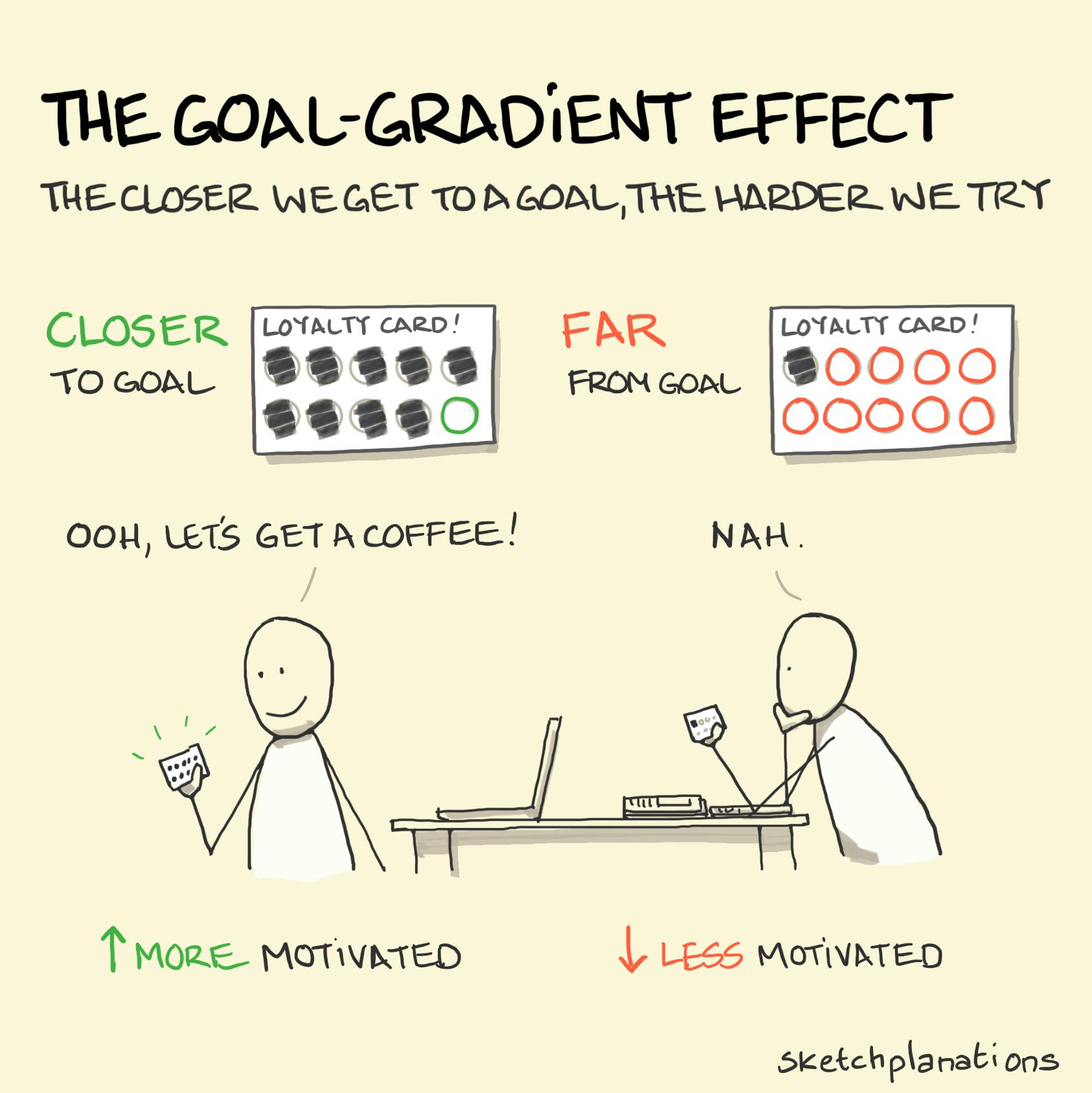The goal-gradient effect

- Prints
- Copied!
👇 Get new sketches each week
Have you ever noticed the pull of completing the last few pieces of a jigsaw puzzle? Or maybe it’s the last clue of a murder mystery, the final chapter of your book or the ultimate mile of a marathon. Being close to our goal can motivate us to get to the end. That’s the goal-gradient effect at work.
What is the Goal-Gradient Effect?
The goal-gradient effect—also known as the goal-gradient hypothesis—may be part of why getting started is sometimes the most challenging part and may cause us to over-prioritize near-term goals to the detriment of later ones.
In the example in the sketch, Oleg Urminksy and coauthors found that as people approached the final stamp of a loyalty card towards a free coffee, they were more likely to buy coffee faster. And when issued with a new card, the rate of purchase dropped. The urgency diminished with the blank card and the perk once again distant.
The researchers also found that it wasn’t the absolute distance from a goal but the perception of distance that mattered. People who started with a 12-stamp card with two stamps already completed tended to complete the card faster than those who started with an empty 10-stamp card, even though they had the same number of stamps to the goal. This related quirk of behavior is known as the endowed progress effect or the progress illusion.
Read more in Katy Milkman and Kassie Brabaw's Scientific American article, Why Feeling Close to the Finish Line Makes You Push Harder .
Related Ideas to The Goal-Gradient Effect
- Katy Milkman also educated me about the fresh start effect
- The Peak-End Rule
- What Drives Us: Autonomy Mastery Purpose
- The 3 bricklayers
- Public commitment pledge
This sketch appears in my book Big Ideas Little Pictures

